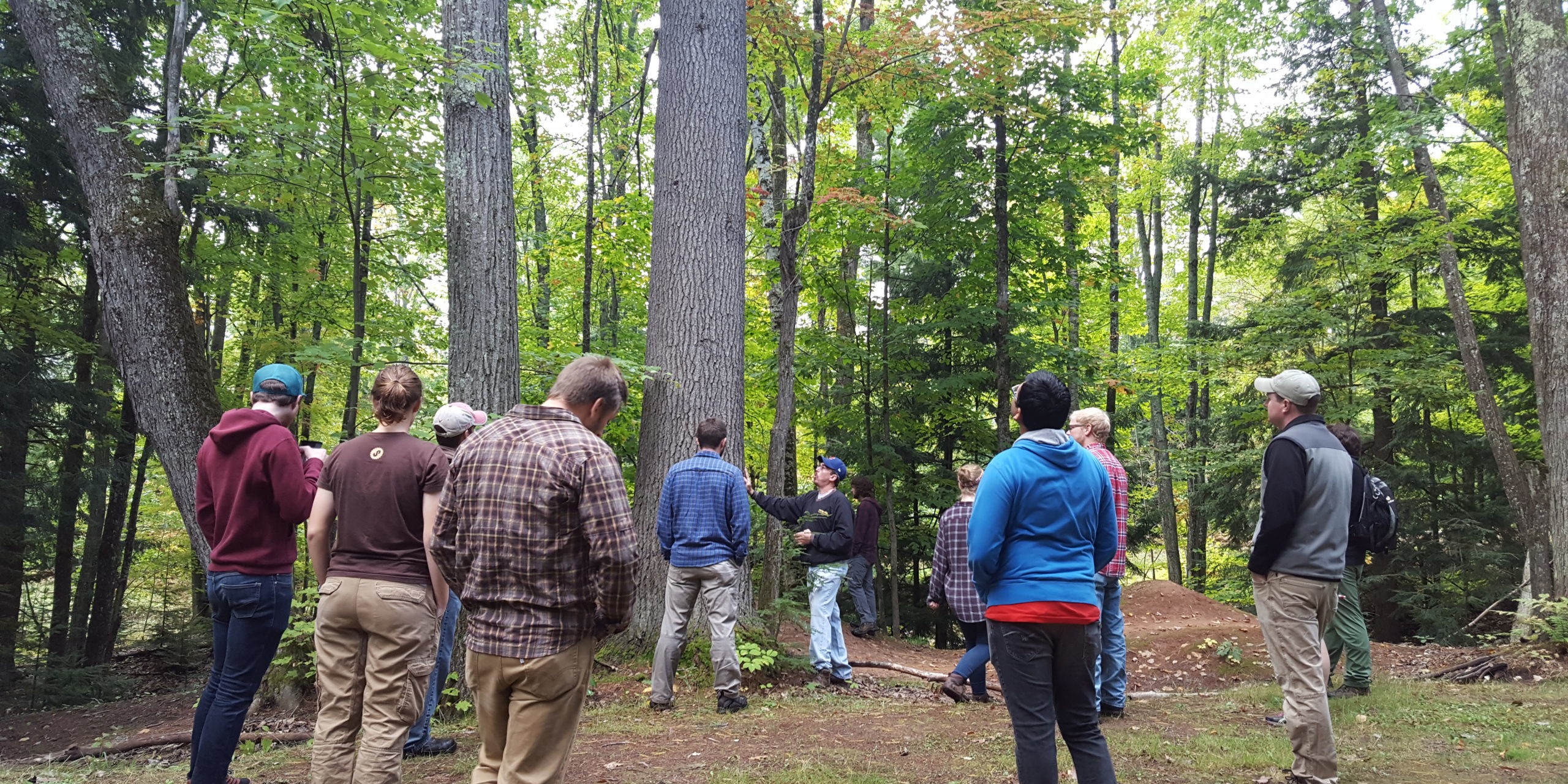Two-Hearted River Reserve

Ford Center Research Forest
Michigan Technological University, School of Forest Resources and Environmental Science
Written by James Schmierer
The core lands of Ford Center Research Forest are a mosaic divided about equally. They include the Baraga Plains tract of sandy outwash plains, dominated by jack pine and the Ford property in and around Alberta Village, composed of silty Sturgeon River soil favoring upland northern hardwoods, hemlock, black spruce, and wetlands.
When the Research Forest was acquired in the 1950s, much of the hardwoods had been high-graded (although even this partial cutting left more structure than clearcutting) and some areas had burned. Much of the jack pine on the outwash plain was poorly stocked or non-stocked. The early efforts to manage for sustained yield on the Research Forest were part of the developing science of forestry. Some of the earliest continuous forest inventory (CFI) on permanent plots was conducted here as were some of the early efforts in northern hardwoods uneven-aged management and mechanical site preparation for natural regeneration of jack pine. Soil analysis, understory and habitat type research, forest yield studies, stocking level studies, woodlot management studies, plantation and direct seeding studies, and tree grade to log grade to lumber grade studies.
Over the last 60 years, the hardwoods have been managed towards an uneven-aged condition on ten-year cycles, with a focus on full stocking and quality improvement. Removals are normally less than or equal to growth over the cycle, with lesser occurring species favored or held over as reserves. Recent treatments have focused on the regeneration of mid-tolerant hardwoods and eastern hemlock within northern hardwood types. Small areas have also been interplanted with eastern white pine in an attempt to reintroduce this previously more prominent component of the Upper Peninsula of Michigan. Most timber harvesting is carried out during the winter months when freezing to sub-zero temperatures and snow cover minimize adverse soil impacts. Tops, slash, and non-merchantable log sections are left in the forest or along woods roads. These treatments in the hardwoods maintain a well-stocked residual and largely closed canopy forest with interspersed single-tree and group selection openings.
The average management unit size of about 80 acres has promoted age class diversity, especially in jack pine dominated forest. Most of this portion of the land is now fully stocked, and some represents suitable habitat for the endangered Kirtlands’ warbler. Natural red pine in the forest regenerated from post logging fires in about 1910 has been thinned several times to maintain the dominance of that species while encouraging species diversity with scattered white pine and red oak. Management units are irregular in shape and boundaries tend to follow natural landscape features, creating varying amounts of openings and edge throughout the property.
Water quality has been protected through a well-designed and well-built road and trail system, and appropriate buffer strips and reserve areas near streams and rivers. Application of water quality best management practices and maintaining a high degree of ground vegetation and tree cover minimizes rapid runoff, erosion, and sedimentation. A forest water quality BMP demonstration area has been created in the Ford Forest.
Forest Statistics
- Acreage: 4,700 acres
- State: Michigan
- Nearest Community: L’Anse and Baraga Townships, MI
- Forest Types: northern hardwood, Pine, Hemlock, Aspen
- Manager: Michigan Technological University contractors
- Primary Uses: teaching, research, and outreach
Documents and maps
Stay Informed
about our recent projects and upcoming events.
